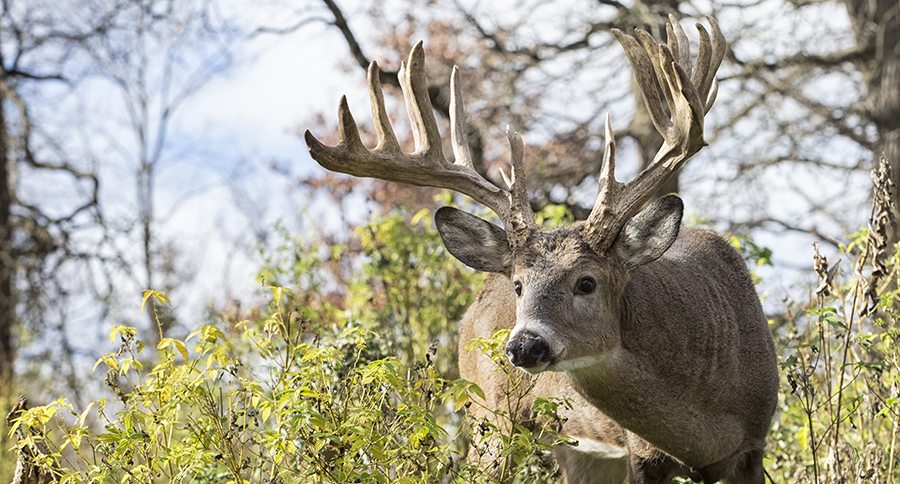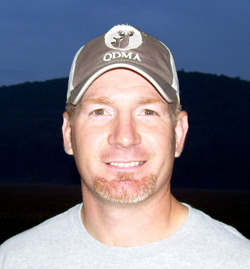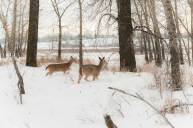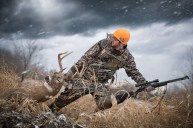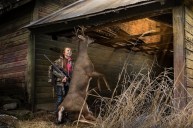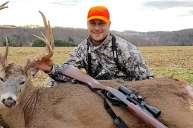We sit down with Quality Deer Management Association's very own Kip Adams to find out just what's up with all these record bucks being harvested.
The last few years have been filled with quite a bit of excitement when it comes to deer hunting records. Several state (and even world) records for whitetail deer have been broken, and more than ever before, older bucks seem to be harvested in abundance.
We wanted to find out why, and had plenty of questions surrounding the issue. Do we have a better reporting systems as technology spills into the industry? Is it something in their food or water sources? Was it just that they are getting bigger and older? Or is there something else that attributes to the success of these hunters, both nation and worldwide?
We knew no one would have a better idea to the answers than Kip Adams.
Quality Deer Management Association's (QDMA) very own Director of Education and Outreach, Kip Adams is a certified wildlife biologist and has years of experience in the study of whitetail deer.
His contributions to the QDMA has directly influenced thousands of hunters, helping encourage them to grow bigger and better deer herds.
Our conversation covered Kip's insight as to just what it is behind all these record deer, as well as a few other topics.
Wide Open Spaces: Is there any simple answer to why we are harvesting more record bucks recently than in previous years?
Kip Adams: Well, the biggest part of more bucks obtaining larger antlers is a function of age. As deer get older they're able to express more of their antler growth potential, and they do so. Right now we are harvesting a record number of bucks that have hit at least that 3.5-year-old age class.
The QDMA Annual Whitetail Report has come out and is full of information. What does this information relay about the growth of record bucks?
Well, we have some long term data from several states and provinces. What we have seen in the most recent deer season is amazing. We have harvested a record number of bucks that were at least 3.5 years of age or older. We always monitor a percentage of bucks from each age group at 1.5, 2.5, and then 3.5 and older. As we put that data together, this most recent season, the highest percentage is 3.5 years and older.
I've grown to want to practice QDMA out of the sheer nature of wanting to kill larger, more mature bucks. To me it's more challenging, but also more rewarding. Is that why we are seeing more record bucks killed, or is there a better recording system to collect harvesting information that contributes to this?
Well Dustin, in our report we make it known that each state collects data differently. Although today technology may make it easier for the hunter to report the information of a harvest, most states are still collecting data the same way they were years before. The vast majority of the states have really good data and although they all collect data differently, it's very accurate. So I wouldn't say the reporting system would be a reason we are seeing more record bucks killed as the data collection is very similar today as it has been for years.
What do you think is the biggest contributor to harvesting these record bucks then?
Well, I think first, a big part of it is that 23 states now have an antler restriction to protect the yearling bucks. This is a great way to ensure bucks are getting a chance to grow, at least past their first year. Aside from this, however, I think the biggest part of it is that we are experiencing a cultural shift in deer hunters. We've been monitoring percentages of yearling bucks killed since 1989 and there has been a steady decline.
More than ever before, hunters are more knowledgeable about deer. They see the benefits of getting to hunt older deer and pass the younger ones. Some of the states today that have the best age structures do not have antler restrictions. They've just had an agency promoting the benefits of protecting yearling bucks for a long time. Now, hunters have been doing it long enough that they see the benefits that they want to do it themselves.
Do you think food plots, herd management, and the overall hunter want to grow deer has any impact on the number of record bucks we are seeing killed?
Absolutely, I think the age is the number one factor and the average age of the buck is older today than in the past. But of course, I think the second reason is there is better nutrition in a lot of areas. Private land owners especially, but the public land hunters as well. Both are enhancing habitat at a far greater rate than we ever have in the past. You see more food plots, timber cuts specifically for deer and wildlife. There is so much going on to help deer from the average hunter and land owner that play a huge role in this as well.
How can someone hunting public land, who may not be able to put out food plots, increase their chances at shooting a record buck?
First of all, we're lucky today that bucks on public land are reaching the age structure that they are. We have found that the bucks on public land are reaching the same age structure as those bucks on private land. Part of it is the perception is, hunters think the public land is overpopulated and over hunted. The reality of it is, for hunters who are willing to go further off the road, they have some almost exclusive hunting opportunities because there are just so few hunters. And of course any time that they pass younger deer, it just helps them with future hunting opportunities to an older buck.
I travel throughout the entire Northeast to hunt public land. Most of my success is when I'm miles back in the woods, but I do also hunt smaller parcels of public land. How can someone who hunts those smaller parcels work to get everyone on board managing the property? Or is that next to impossible?
The best way for a public land hunter to help themselves is to be involved locally. By that it may be with a local QDMA branch or just a local Rod and Gun Club. It could be as simple as just meeting the other hunters at the end of the hunt and discussing with them your goals of the season.
Also, one of our writers wrote a great piece on the best times for people to hunt. He found that hunting work days was often more productive. Harvest data and hunter efforts showed us that opening day and the weekends have a lot of pressure. Once those deer are pressured, for two or three days they won't move. They will rarely move during daylight hours and people think there are no deer on the property.
What we found is that after three days, deer activity is almost back to normal. So if you think about that, for the hunters that are hunting Saturday or Saturday and Sunday, three days of abnormal movement from that pressure would have them back to normal movement by Wednesday or Thursday. Now, how many people are hunting on a Wednesday or Thursday? The answer is not many. So really it's just about putting the odds in your favor and taking the time to learn the animal and the land.
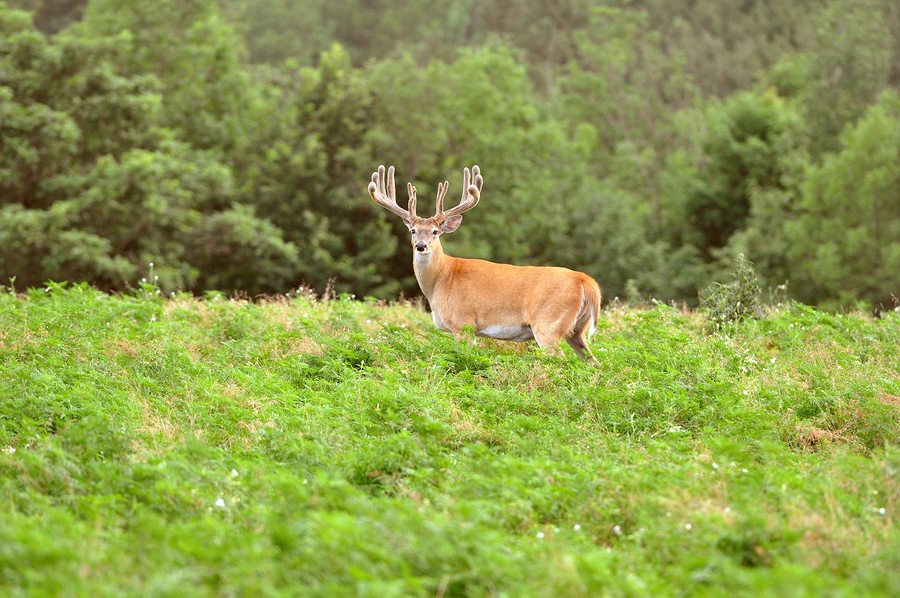
After speaking with Kip, I couldn't help but think back to my dad. He tells everyone I began hunting with him since he could fit me in his backpack. At the age of 30 now, that would mean I've been in the woods hunting for over 25 years. As a writer, I have been able to meet and interview some of the greatest and smartest people in the industry and Mr. Adams was no exception.
I left the conversation excited to share this news with everyone, because not only can we learn that hunting is growing, but we can take with us that the number of older, more mature bucks taken annually is increasing.
More times than not we look at the world today and we shake our heads. We just aren't sure where life is taking us anymore. One thing for sure, however, is the fact that education has helped hunting tremendously. As Kip mentioned, the number of yearling bucks killed has dropped drastically in the past decade, and it's only getting better. That's huge.
Knowledge is power, and we were excited to pass it along.
Like what you see here? You can read more articles by Dustin Prievo here. Follow him and his hunting team, Top Pin Outdoors, on Twitter, Facebook and Instagram.
NEXT: GREGG RITZ SPEAKS FAMILY, THE NRA AND THE FUTURE OF HUNTING
WATCH
https://rumble.com/embed/u7gve.v3v3pj/
